Hand Pulling Out Another Hand Drawing
It might surprise you to learn just how many valuable plants are growing in the wild just waiting to be found by a savvy forager. In fact, some of these plants could be growing literally right outside your front door.
At first glance, some of these plants get dismissed as pesky or invasive "weeds" better suited for the trash or compost than for harvest— but boy, are people missing out!
As it turns out, the term "weeds" isn't a recognized botanical term at all. Weeds are simply defined as "a plant growing in the wrong place". So where some people see weeds others might see ingredients for an earache tincture or an herbal tea to soothe a sore throat.
Related:Edibility Test: Find Out Which Backyard Weeds are Edible
Purslane is one such "weed" that not only tastes great, but is high in vitamin C, Omega-3 fatty acids, antioxidants, iron, and many more. So the next time you're ridding your garden of "plants growing in the wrong place", make sure it's not purslane you're pulling.
Likewise, if you're concerned about an overgrowth of Purslane, you know what they say–if you can't beat it, eat it! Not only does it have powerful medical properties but its crisp, lemony leaves and stems make it an excellent survival food. Purslane is one ancient and valuable plant that you won't want to overlook.
Identification
Little Hogweed, Verdolaga, Pigweed, or Pursly
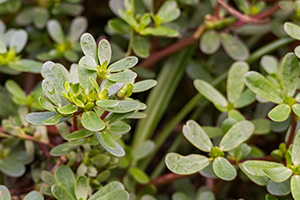
Whatever you choose to call it, Purslane is a plant with many names and a long, rich history.
If you've ever encountered plump, oval-shaped, mystery leaves with reddish stems sprawling out of sidewalk cracks or in the edges of your garden, there's a chance it could be Purslane.
Before you head outside to hunt for one of nature's best-kept secrets, it's always important to follow foraging best practices.
Knowing things like what to look for, where to look, and what look-alikes to avoid will help you stay safe and save time when searching for wild Purslane.
Recognizing Purslane
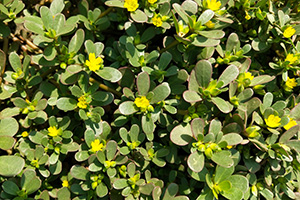 Purslane is an annual succulent plant that thrives in poor soil and grows pretty much anywhere.
Purslane is an annual succulent plant that thrives in poor soil and grows pretty much anywhere.
It sprawls out in a circular pattern low to the ground but has been known to grow as high as 16-inches tall! It has thick, fleshy, oval-shaped leaves and reddish hues throughout the plant.
The most obvious identifiers of purslane are its smooth hairless stems, plushy non-serrated leaves, and its display of tiny five-petaled yellow flowers in the summertime.
Related:79 Edible Flowers in North America (with Pictures)
Although the flowers are usually yellow, there are other types of edible purslane with pink flowers. However, pink Purslane has different identifiers so it's important to research pink purslane specifically if you plan on harvesting it.
Lookalikes
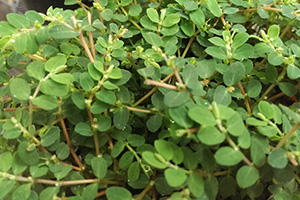 Fortunately, there aren't too many poisonous look-alikes that get mistaken for Purslane.
Fortunately, there aren't too many poisonous look-alikes that get mistaken for Purslane.
Though, there is one mildly toxic lookalike found in a plant called Spurge. Spurge is similar in appearance to purslane but easy enough to avoid if you know what to watch out for.
Spurge is not a succulent plant like Purslane is. The leaves are paper-thin with small serrated saw-toothed edges.
Unlike Purslane which has smooth, thick stems, there are fine hairs present on the stems of Spurge plants. Perhaps the most important identifier of Spurge is the white latex liquid in the stem.
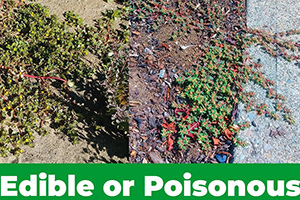 If you're unsure if what you're looking at is Purslane or Spurge, snap one of the stems. If it oozes a white or milky-colored liquid, it's probably Spurge.
If you're unsure if what you're looking at is Purslane or Spurge, snap one of the stems. If it oozes a white or milky-colored liquid, it's probably Spurge.
Spurge is mildly toxic and handling it can irritate the skin and eyes. While eating spurge probably won't kill you, it could make you quite sick.
Related:8 Edible Backyard Plants And Their Poisonous Lookalikes
The Many Uses of Purslane
Although it's considered invasive and hard to get rid of, people have intentionally cultivated it for centuries.
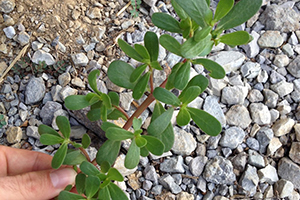
The leaves, stems, seeds, and flowers are all edible and have multiple survival and medical uses.
Eaten raw or cooked, this plant plays host to many important vitamins and nutrients that could be hard to supplement in a survival or SHTF situation.
Thanks to its natural anti-inflammatory, antibacterial and antifungal properties it can also be used to treat burns, insect stings, and even earaches. Plus, the raw leaves are made up of 93% water!
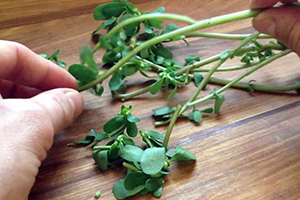 One of the most celebrated facts about purslane is that it has more Omega-3 than any other vegetable in the world. Omega-3 fatty acids are essential fats that aid in healthy immune function, heart health, cognition, and bone strength– making it a great plant to have around when food options are limited.
One of the most celebrated facts about purslane is that it has more Omega-3 than any other vegetable in the world. Omega-3 fatty acids are essential fats that aid in healthy immune function, heart health, cognition, and bone strength– making it a great plant to have around when food options are limited.
You can cut purslane several times and it will grow back quickly. So if you enjoy it, there will be no shortage of purslane in your diet.
Plus, there's nothing more satisfying than food that is free, easy to grow, tasty, and healthy!
Recipes
Because of its wide range of medicinal and edible uses, there are heaps of purslane recipes available both online and in cookbooks.
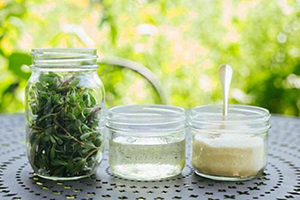 One interesting, tasty, and long-lasting recipe is pickled purslane stems.
One interesting, tasty, and long-lasting recipe is pickled purslane stems.
They have a crisp and tangy taste that is similar to pickles!
Purslane is also fantastic when fermented with whey and brine, but for this recipe, we will be pickling our stems.
To make pickled purslane, you will need:
- A heat source for boiling
- A non-reactive pot or saucepan
- 1 sterilized pint-sized mason jar or similar canning jar.
- Enough Purslane stocks to fit the depth of your jar – typically ½ lb. or 1-2 cups. (with or without leaves)
- ½ cup red or white wine vinegar
- ½ cup water
- 1 ½ tsp. pickling salt or sea salt
- 1 tbsp peppercorns
- 1-2 crushed garlic cloves
- ½ tbsp of spices and herbs of your choice, such as dill or turmeric.
Related:How To Pickle Cattails For Long-Term Preservation
Instructions
-
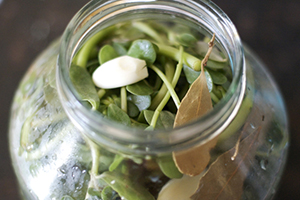 Sterilize your pint-size canning jar and lid, set them aside.
Sterilize your pint-size canning jar and lid, set them aside. - Rinse purslane to remove any dirt.
- Lightly pack your Purslane into the jar.
- Add all other ingredients to a non-reactive saucepan or pot and bring to a boil.
- Pour the hot liquid into the purslane-packed jar until completely covered.
- Cover the jar with the cap.
- Seal jars and store for 1-2 weeks to allow the flavors to marry. The jar will remain shelf-stable for up to 6 months unopened. Once opened, you may store your pickled purslane in the fridge for several months.
At the end of the day, this abundantly available weed packs more nutrients than a lot of store bought leafy greens.
So whether or not you decide to go hunting for purslane growing on your property, it's at least a good backup food source to have.
Purslane is not only free, delicious, and nutritious, but it also reminds us of just how bountiful nature can be.
You may also like:
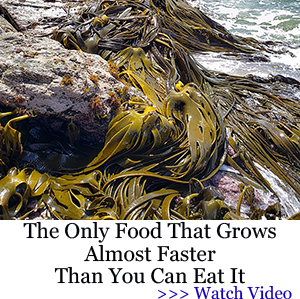 53 Plants & Herbs You Can Propagate From Cuttings
53 Plants & Herbs You Can Propagate From Cuttings
Similar to Morphine: The Best Natural Painkiller That Grows in Your Backyard (Video)
How to Make Your Own Mask for a Pandemic
The Only Form of Communication After T-SHTF
39 Items You Can Compost
![]()
Hand Pulling Out Another Hand Drawing
Source: https://www.askaprepper.com/stop-pulling-out-this-weed-and-do-this-instead/
0 Response to "Hand Pulling Out Another Hand Drawing"
Post a Comment